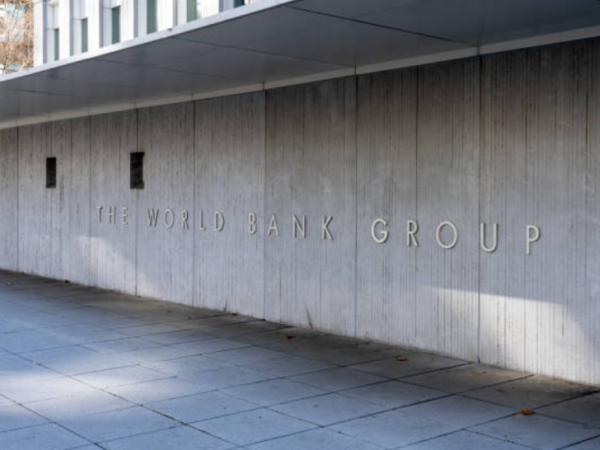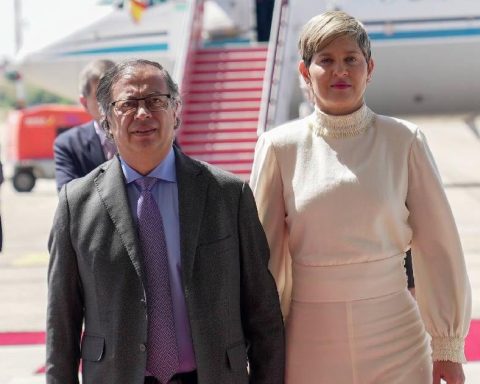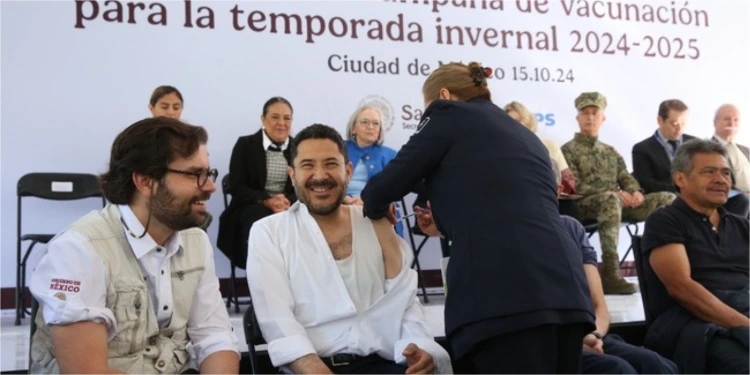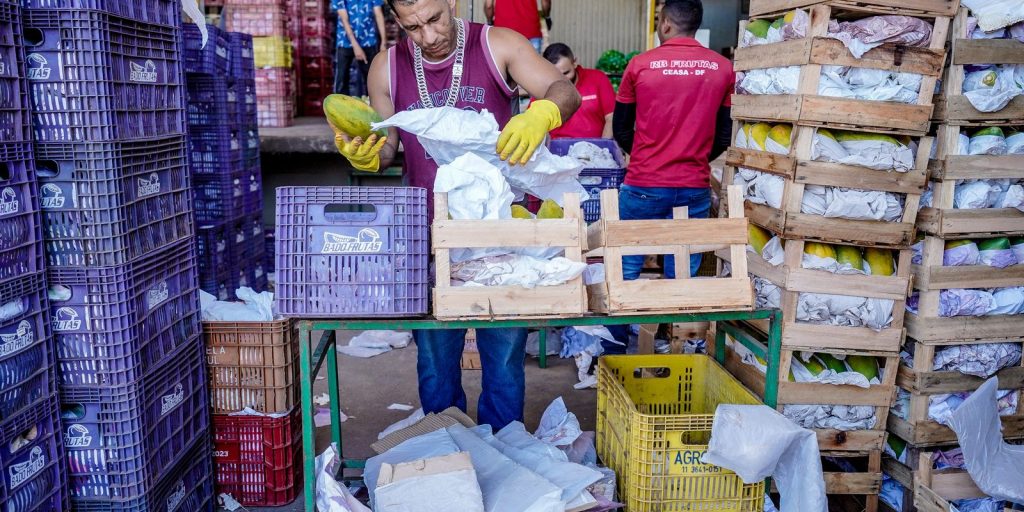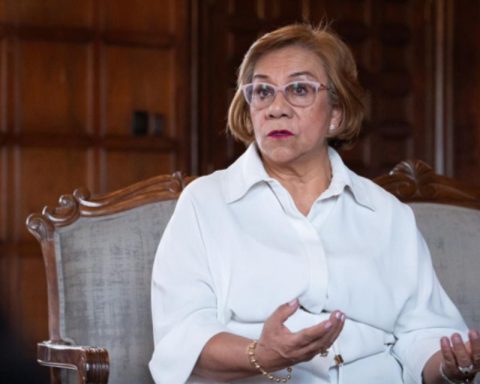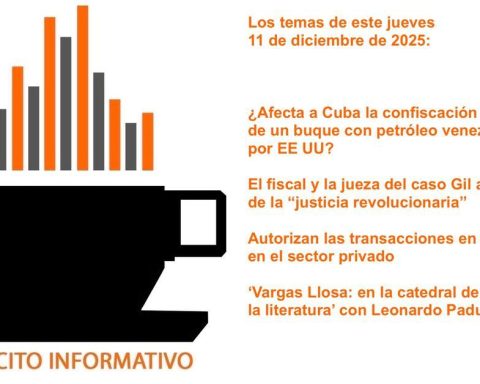Ending poverty in half the world could take more than a century, according to estimates in a new World Bank report. Today, according to the data, At least 700 million people, that is, 8.5% of the global population, live in extreme poverty. That means they survive on less than US$2.5 a day.
(Read: Not everything is so bad: risk perception in Colombia would be better than thought)
This report is the first post-pandemic assessment of global progress towards eradicating poverty. In detailthe Bank projects that eradicating extreme poverty by 2030 is out of reach. It should be noted that this indicator is part of one of the Sustainable Development Goals (SDGs).
In addition to the figures that the group highlights as alarmingit is estimated that 7.3% of the world’s population will be in extreme poverty in 2030, which is equivalent to about 622 million people. Also, around 3.5 billion people, or 44% of the world’s population, remain poor especially in upper-middle-income countries, where the survival weight is US$6.85 per day.
(Read more: The South American country that will be a power in 2025, according to a study)
“If growth does not accelerate and become more inclusive, it will take decades to eradicate extreme poverty and more than a century for people to rise above the poverty line of US$6.85 a day.“, indicates the text.
Now, one of the reasons why progress is projected to be stalling, It is about the multiple shocks and growth patterns that have not allowed the poorest to have higher incomes.
(Read: Taxes and social contributions are taking away space from savings)
This, according to the World Bank, stems from the pandemic that had “devastating” effects and where poverty in countries with fewer resources, Today it is still higher than the rates estimated before covid 19.
Growth
iStock
“Poverty continues to be concentrated in environments with historically low economic growth and fragility. Progress on narrowing the global prosperity gap, the World Bank’s new measure of shared prosperity, has also stalled since the pandemic due to a reduction in economic growth and a divergence in average incomes between countries.”they say.
(See more: Tight financial conditions, uncertainty limit growth: Moody’s)
It is even mentioned that currently the income of the entire world would have to quintuple to reach a prosperity standard of US$25 per capita per day, a situation that in many places in the world continues to be an aspirational issue.
Another factor mentioned is inequality. According to the report, around a fifth of the world’s population lives in countries with a high percentage of inequality. In fact, The highest levels of income or consumption inequality are concentrated in nations in sub-Saharan Africa and Latin America and the Caribbean.
(Read: Economy in Colombia is growing by inertia and without a clear catalyst)
For example, in Latin America and the Caribbean, it is estimated that high inequality reaches 86.9%, while moderate inequality is projected at 13%. For its part, in sub-Saharan Africa, it is estimated that 48.8% of countries have high inequality, 48.8% have moderate inequality, and only 2.2% have low inequality.

Growth
iStock
“High inequality may reflect a lack of socioeconomic mobility opportunities, which may further hamper prospects for inclusive growth and poverty reduction over time“, they state.
(See also: Colombia’s economic growth would remain below potential until 2026)
Against this, they add that rapid and inclusive growth is needed to accelerate progress towards shared prosperity, taking into account that at the current rate of growth a typical upper-middle-income country It will take 100 years to close the prosperity gap.
“The number of years needed can be reduced if income growth is substantially faster or more inclusive. Countries can achieve the same level of prosperity with lower growth and a decrease in inequality“, they say.
(Read: The paths that economic reactivation should take in Colombia)
For his part, Axel van Trotsenburg, senior managing director of the World Bank, assured that After decades of progress, the world is experiencing serious setbacks in the fight against global poverty, as a result of interconnected challenges, including slow economic growth, the pandemic, high debt, conflict and fragility, and climate shocks.

Inequality
iStock
“In the context of these overlapping crises, business as usual is no longer useful. We need a fundamentally new strategic model of development if we are to truly improve people’s lives and livelihoods and protect our planet”, he estimates.
(Read more: Recovery of the Colombian economy would continue in the coming months)
Likewise, Indermit Gill, chief economist and senior vice president for development economics at the World Bank Group, stated that low-income countries and emerging market economies They must recognize that it is inevitable to seek a balance between these objectives, but also value the synergies that can be generated.
“Policies to reduce air pollution, for example, contribute to both climate and development goals. Sustained investments in education and health generate greater benefits related to poverty and prosperity in developing countries than tax-financed social assistance programs”, he noted.
(See also: In 2023, half of the debt payments of cities and municipalities will go to interest)

Inequality
iStock
Climate crisis
According to the estimates in the Group’s report, currently, One in five people is at risk of experiencing an extreme weather event in their lifetime, meaning they are likely to suffer serious setbacks to their livelihoods, which will significantly hamper poverty reduction efforts.
(Read: Reforms, Banrep decisions and taxes: OECD recommendations for Colombia)
Because of this, the risks people face from climate hazards are expected to increase unless resilience is strengthened and greenhouse gas (GHG) emissions decrease.
To protect people from extreme weather events, it is necessary to act on two fronts, such as reducing vulnerability by improving risk management; and prevent the escalation of future climate risks by accelerating transformations to reduce the emissions intensity of growth.
(See: Management of economic policy continues to generate uncertainty in the country)
“To inform decisions, it is important to understand the trade-offs between increasing incomes and reducing GHG emissions, find ways to scale up synergistic policies that can help advance multiple fronts or reduce the trade-offs, and manage near-term transition costs for groups. and specific communities“, they conclude.
